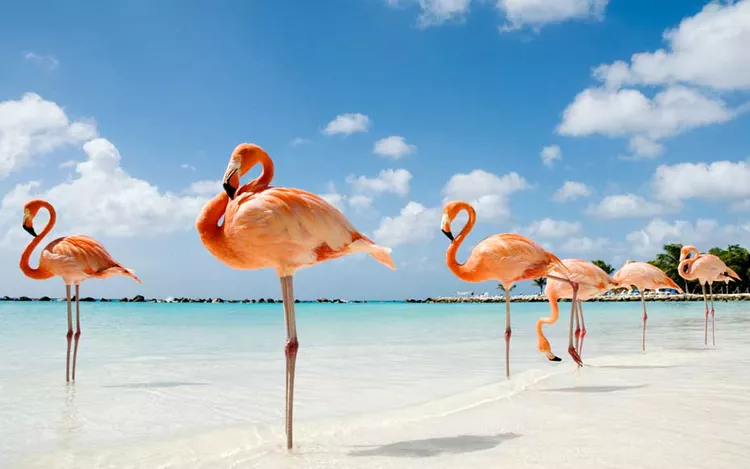Summary
Visiting the Flamingo Island
About 10 minutes by boat from the island of Aruba, there is an island owned by the luxury Renaissance hotel chain where flamingos roam freely, providing a unique opportunity for vacationers to swim with these stunning pink creatures.
Day Pass Information
Guests who stay at the Renaissance Wind Creek Aruba Resort can visit the 40-acre Renaissance Island and the renowned Flamingo Beach at no extra cost. Complimentary taxis depart the resort—located just 3 miles from the international airport—every 15 minutes between 7 a.m. and 7 p.m. for exclusive access to the island.
If you’re not staying overnight at the Renaissance resort, you can purchase a day pass for $125. It is advisable to call the property on Saturday to check availability and reserve your spot for the following week. Alternatively, day passes can also be purchased online, with availability released on Saturdays.
Due to high hotel occupancy, the resort might limit day pass availability, especially as these passes are highly sought after by cruise-ship guests docked in Aruba. Therefore, if you’re keen on visiting and meeting the flamingos, it’s wise to wake up early and either call the resort or access the online booking first thing on Saturday morning.
Beaches and Zones
Your day pass includes a meal and an alcoholic drink at Papagayo Bar & Grill or Mangrove Beach Bar. For added comfort, private cabanas are available for rent. It’s important to note that the white-sand Flamingo Beach section of Renaissance Island is exclusively for adults, while the nearby Iguana Beach welcomes families with children. Children are allowed on Flamingo Beach only between 9 a.m. and 10 a.m.
Many visitors come to this private island specifically for selfies with the flamboyant flamingos.
Other Flamingo Locations
Aruba is not the only destination where you can capture memorable moments with flamingos. Other remarkable locations include the Galápagos Islands in Ecuador, Bonaire in the Caribbean, and Mexico’s Yucatan peninsula. Each place offers beautiful scenery alongside opportunities to observe these fascinating birds.




